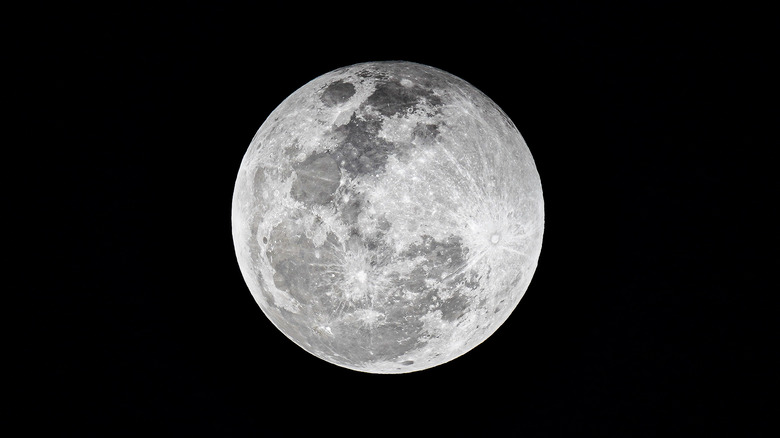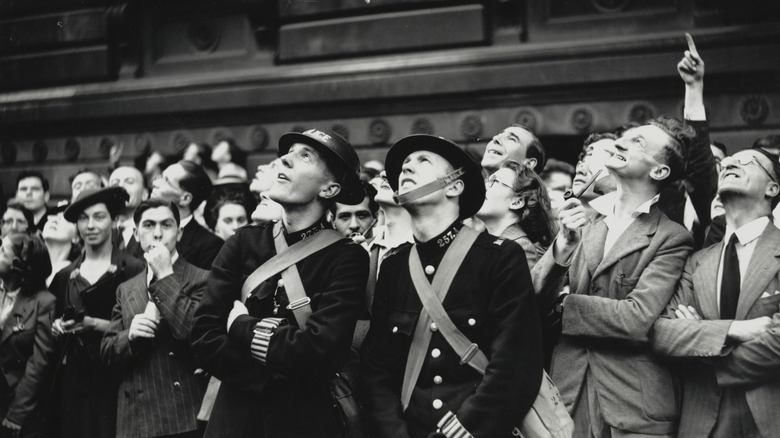What Really Happened During The Great Moon Hoax?
While the internet allows us to spread misinformation quickly, hoaxes are nothing new — especially when it comes to the moon. In fact, one of the greatest moon-related hoaxes in U.S. history was dubbed the "Great Moon Hoax," according to Smithsonian. This hoax dates back to 1835, when New-York-based newspaper The Sun published a series of six articles that covered several discoveries English astronomer Sir John Herschel made using a huge telescope.
According to Historic Mysteries, the discoveries were fantastical, and included 76 plant species and several animals that resembled goats, bison, beavers, as well as a "strange amphibious creature." But that's not all. Herschel also saw human-like creatures with copper hair, yellow faces, and wings, which he named "Vespertilio-Homo." The creatures lived near a temple that appeared to be constructed of sapphire.
Sadly, Herschel's observations came to an end when the lens of his telescope was damaged in a fire. It seems that even after the telescope was repaired, Herschel could not see the same details he did before.
Like all good hoaxes, news of Herschel's discoveries spread
Needless to say, the hoax generated quite a bit of excitement and debate in and around New York City. Other newspapers began printing stories about Herschel's discoveries, and by the end of September that year, news of these discoveries made its way to Europe. That said, there were more skeptics in Europe, and many European papers regarded them as a hoax, per Historical Mysteries.
Meanwhile, in the U.S., the newspaper the New York Herald took issue with The Sun, and criticized the paper for printing the hoax. Herald publisher James Gordon Bennett identified the real author of the articles as Richard Adams Locke. He reported that The Sun hired Locke two months prior as well as providing evidence debunking the hoax. Locke initially denied the accusations, but fessed up five years later, explaining that he intended the articles to be satire.
As for Herschel, he was in South America when news of the Great Moon Hoax was gripping the world, and knew nothing about it until someone pointed it out. Historical Mysteries explains that Herschel took the news in good humor.

